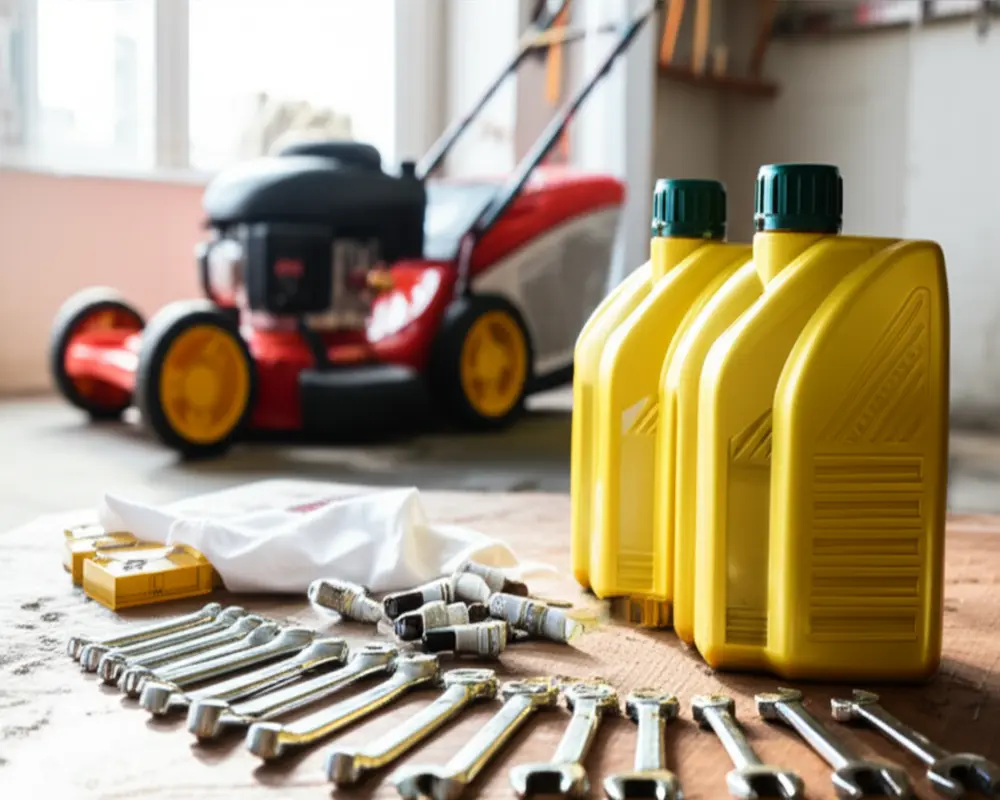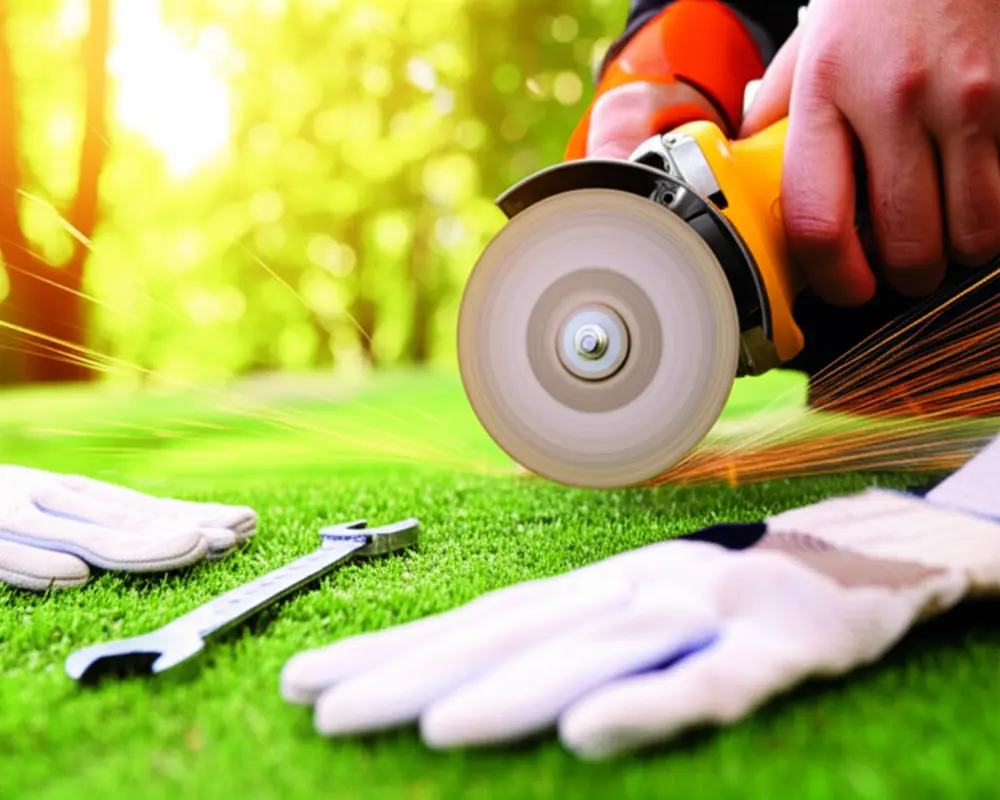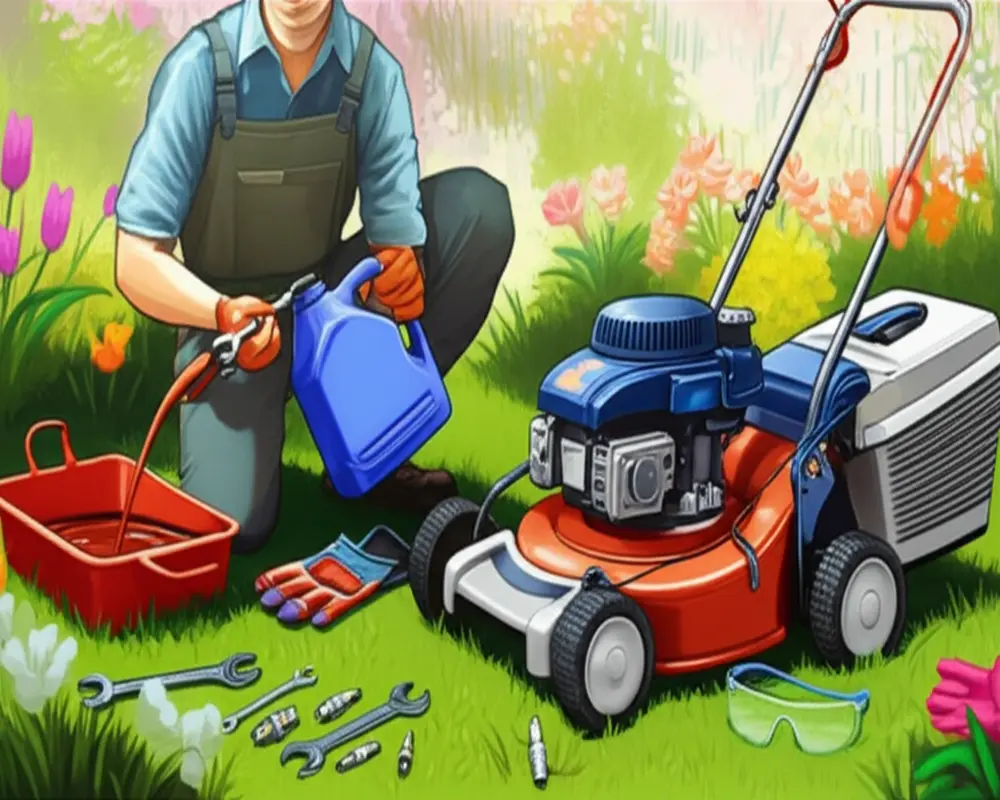Spring Lawn Mower Preparation: Your Essential Guide 2025
As the chill of winter gives way to the warmth of spring, your lawn mower needs a fresh start to keep your lawn healthy and vibrant throughout the growing season. The process of spring lawn mower preparation is critical not only to maintain the mower’s efficiency but also to extend its lifespan and ensure the safety of its operation. This comprehensive 2025 guide is designed to empower you with expert knowledge, walking you through essential maintenance steps, safety precautions, and troubleshooting techniques to get your mower ready for the season.
Whether you are a seasoned gardener or a homeowner eager to take charge of your lawn care, this detailed guide offers a step-by-step approach to lawn mower maintenance including fuel system care, blade sharpening, and more. By following these practices, you will set the foundation for a thriving lawn, while also enhancing your mower's performance and reliability.
1. Introduction: Revitalize Your Ride – Why Spring Mower Prep Matters
Spring marks a pivotal time for lawn care, and ensuring your mower is in prime condition is fundamental. After months of inactivity, critical mower components such as the fuel system, engine oil, and blades can degrade or accumulate debris that hampers performance. Neglecting spring maintenance can lead to inefficient cutting, increased fuel consumption, and costly repairs.
By undertaking a thorough spring mower tune-up, you not only improve the machine's cutting ability but also contribute to the overall health of your lawn by providing clean, even cuts that encourage growth. This guide will provide you with clear, actionable steps and safety reminders to confidently prepare your mower, avoiding common pitfalls and ensuring a smooth start to your lawn care season.
2. Safety First: Essential Precautions Before You Begin
Your safety is paramount when working with power equipment. Before any maintenance begins, make sure to take necessary precautions. For gas-powered mowers, disconnect the spark plug wire to prevent accidental starting. Electric mowers require battery removal or disconnection. Always allow the engine to cool completely before touching any parts to avoid burns.
Wear appropriate personal protective equipment such as gloves and safety glasses. Conduct maintenance in a well-ventilated area to avoid inhaling fumes, and keep the mower manual on hand to reference model-specific instructions. Adhering to these safety measures prevents injuries and ensures the maintenance process goes smoothly.
3. Gather Your Gear: Tools & Materials Checklist
Preparation is key to efficient maintenance. Assemble your tools and materials before starting. You will need a wrench set, spark plug wrench, oil drain pan, fresh fuel, fuel stabilizer, engine oil suitable for your mower (check the manual for grade and quantity), a new air filter or cleaning supplies for foam types, a blade sharpener, wire brush, clean rags, gloves, and safety glasses.
Having all these items ready helps you methodically complete each maintenance step without interruptions. Below is an image illustrating essential tools you will need:

4. Comprehensive Spring Tune-Up: Step-by-Step Guide
4.1 Fuel System Maintenance: Fresh Start for the Season
Old fuel left over from the previous season can degrade, causing starting issues or engine damage. Safely drain the stale fuel into an approved container and dispose of it according to local hazardous waste regulations. Inspect fuel lines for cracks or brittleness and replace any damaged parts to prevent leaks.
Clean or replace the fuel filter if your mower has one. Refill the tank with fresh, clean gasoline mixed with a fuel stabilizer to prevent future degradation and improve engine efficiency. This step ensures your mower’s fuel system performs optimally throughout the spring.
4.2 Oil Change: The Engine's Lifeblood
Engine oil lubricates moving parts and keeps the mower running smoothly. Warm the engine briefly to loosen old oil, then place an oil drain pan beneath the drain plug and remove it to let the oil flow out completely. Reinstall the plug securely.
Refill with the correct oil grade and quantity as specified in your mower's manual. Check the oil level using the dipstick, adjusting as needed. Regular oil changes reduce wear and extend engine life.
4.3 Spark Plug Inspection & Replacement: Igniting Performance
The spark plug ignites the fuel-air mixture in the engine. Remove the spark plug using a spark plug wrench and check its condition. Look for deposits, wear, or damage. Measure the electrode gap and adjust if necessary.
If the spark plug shows significant wear or fouling, replace it with a new one matching your mower’s specifications. Tighten the plug to the recommended torque to avoid damage.
4.4 Air Filter Cleaning/Replacement: Breath of Fresh Air
A clean air filter allows proper airflow, improving combustion and engine performance. Remove the air filter cover and identify the filter type. Foam filters can be washed with warm soapy water, rinsed, dried, and lightly oiled before reinstalling. Paper filters should be replaced if dirty or damaged.
4.5 Blade Care: Sharpen, Balance, & Inspect for Optimal Cut
Sharp, balanced blades are essential for a clean cut and healthy grass. Remove the blade carefully, ensuring the mower is stable and the spark plug wire disconnected. Inspect the blade for nicks, cracks, or excessive wear.
Sharpen the blade at the correct angle using a file or sharpening tool to restore its edge. Balance the blade by checking if it sits level on a blade balancer; an unbalanced blade can cause vibration and damage. Reinstall the blade securely, ensuring it is oriented correctly.

4.6 Mower Deck Cleaning: Prevent Rust & Improve Airflow
Grass clippings and debris accumulate under the mower deck, leading to rust and restricted airflow which affects cutting efficiency. Use a scraper or wire brush to remove buildup. Wash the deck with water, avoiding direct spray on the engine and electrical parts.
Inspect the deck for rust spots or damage and treat rust with appropriate rust-prevention products. Keeping the deck clean promotes better airflow and prevents corrosion.

4.7 Engine & Exterior Cleaning: Beyond the Deck
Wipe down the engine surface and cooling fins with a dry rag to remove dust and dirt that can cause overheating. Check belts, cables, and wheels for wear or damage and replace or adjust as needed. Also, set the cutting height to your preferred level for the season.
5. Pre-Start Checks: Before You Fire It Up
Before starting your mower, ensure all connections are tight and safety guards are properly in place. Clear the area of any tools, rags, or debris that could interfere with operation. Confirm that fuel and oil levels are adequate. These checks help prevent accidents and mechanical issues.
6. The Moment of Truth: First Start & Test Run
Start your mower following the manufacturer’s instructions—usually involving setting throttle and choke controls appropriately. Listen for smooth engine sounds without sputtering or unusual noises. Observe the blade engagement and mower movement during a test run to confirm all systems function correctly.
7. Common Troubleshooting: When Things Don't Go as Planned
If your mower fails to start or runs roughly, check the fuel system for stale fuel or blockages. Inspect the spark plug for fouling or incorrect gap and replace if necessary. Verify the air filter is clean and properly installed. Carburetor issues may require cleaning or adjustment. Addressing these common problems promptly can save time and money.
8. Tips for Optimal Performance & Season-Long Care
Maintain your mower's performance by storing it properly in a dry, sheltered area when not in use. Use fuel stabilizers to prevent gas degradation during storage periods. Sharpen blades regularly—generally every 20-25 hours of use—to keep cuts clean. Additionally, mow with a consistent pattern and avoid cutting wet grass to promote lawn health.
9. When to Call a Professional: Knowing Your Limits
While many maintenance tasks are manageable at home, some situations require professional attention. If you encounter persistent engine problems, complex carburetor repairs, or electrical issues beyond basic battery or spark plug replacement, consult a certified technician. Professional servicing ensures safety and preserves your mower’s longevity.
10. Conclusion: Ready for a Beautiful Lawn!
By dedicating time to spring lawn mower preparation, you invest in your lawn’s success and your mower’s durability. This detailed maintenance routine enhances cutting efficiency, promotes safety, and prevents costly repairs. Regular upkeep throughout the season will keep your mower running smoothly and your lawn looking its best.
Embrace this yearly ritual with confidence and enjoy the rewards of a thriving, well-manicured lawn all season long.
Frequently Asked Questions
- How often should I sharpen my lawn mower blade during the season?
- Sharpen your blade approximately every 20-25 hours of mowing or at least once every mowing season to maintain a clean cut.
- Can I use regular gasoline without a fuel stabilizer?
- While you can use regular gasoline, adding a fuel stabilizer helps prevent fuel degradation, especially if the mower will sit unused for extended periods.
- Is it necessary to change the oil every spring?
- Yes. Changing the oil each spring before heavy use removes contaminants and ensures proper lubrication, extending engine life.
- What safety gear is recommended during mower maintenance?
- Wear gloves to protect your hands, safety glasses to shield your eyes, and sturdy footwear to prevent injuries.
Further Reading and Resources
For detailed guidance on garden tool maintenance and rust prevention, visit our article on garden spade rust prevention. To understand effective digging techniques that complement lawn care, see digging spade technique.
For safety in garden tool use, including forks, check the garden fork safety tips article. Also, the US Environmental Protection Agency provides valuable information on lawn care and pesticide safety, which is essential knowledge for safe lawn maintenance.
The Department of Energy offers practical advice on spring lawn mower maintenance tips that complement this guide. For hands-on repair tips, consult Family Handyman’s lawn mower maintenance how-to.

